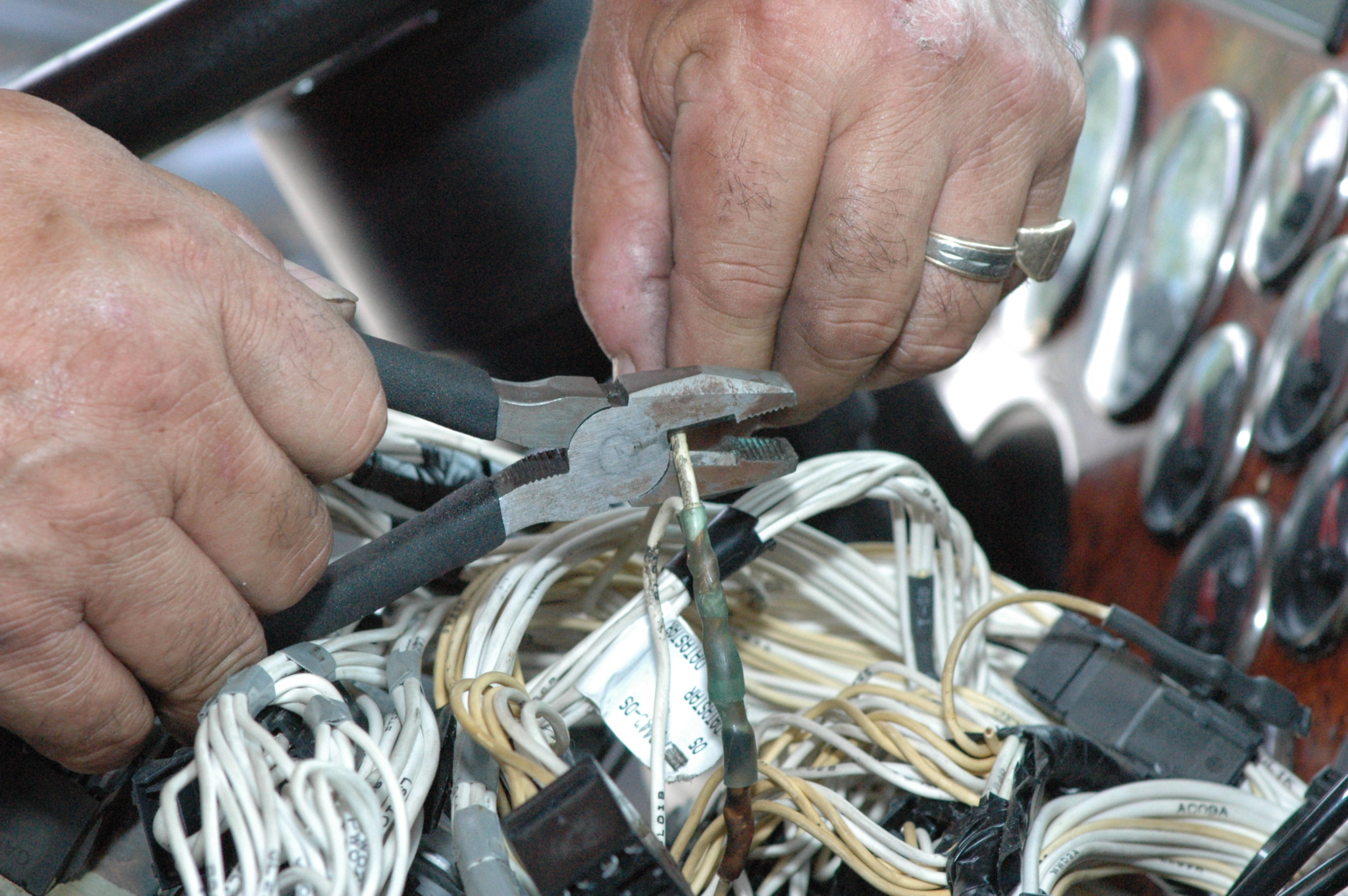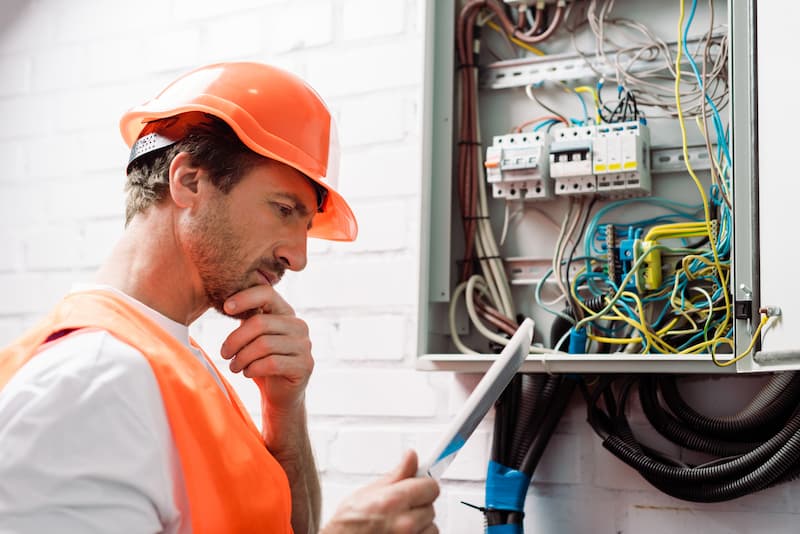Specialized technical support for electrical industry for growth and progress.
Specialized technical support for electrical industry for growth and progress.
Blog Article
Leading Tips for Effective Electric System Troubleshooting
Repairing electrical systems calls for a systematic method, based in a thorough understanding of electrical principles and safety and security protocols. By familiarizing oneself with circuit elements, making use of important devices, and sticking to a structured examination technique, professionals can effectively identify and settle concerns. Nevertheless, the subtleties of efficient repairing expand beyond simple technical expertise; understanding exactly how to record findings and focus on security can considerably influence end results. As we explore these crucial aspects further, it becomes clear that understanding this procedure is not just beneficial yet important for success in the area.
Understand the Essentials
Understanding the basics of electrical systems is important for efficient troubleshooting, as a strong foundation allows service technicians to identify and fix concerns much more successfully. A thorough grasp of electrical concepts, such as voltage, present, resistance, and power, is vital in determining the origin triggers of problems. Voltage is the electric potential distinction that drives existing through a circuit, while resistance opposes the flow of current, influencing the overall functionality of the system.
Experience with circuit elements, consisting of resistors, capacitors, diodes, and changes, is likewise paramount. Each element plays a distinctive function in circuit habits and can influence efficiency when malfunctioning. Additionally, recognizing series and identical circuit setups is vital, as these arrangements affect the circulation of voltage and present within the system.
In addition, understanding of safety and security protocols is essential. Technicians have to know possible risks, such as shock and short circuits, to execute risk-free troubleshooting techniques. By understanding these foundational ideas, technicians enhance their ability to carry out reliable diagnostics and repairs, eventually bring about improved performance and reliability of electrical systems. This fundamental expertise is the keystone of effective troubleshooting ventures.
Gather Necessary Tools
Efficient troubleshooting of electrical systems requires the appropriate set of tools to identify and fix problems precisely. A fully equipped technician can substantially improve effectiveness and efficiency in identifying problems. Essential devices consist of a multimeter, which gauges voltage, present, and resistance, enabling accurate assessments of electrical parts. Clamp meters are likewise important for measuring existing without detaching the circuit, guaranteeing safety and benefit.
Furthermore, insulated hand devices such as screwdrivers, pliers, and wire pole dancers are important for safely adjusting electrical links. It is also recommended to have a circuit tester available to validate the presence of voltage in electrical outlets and cables. For even more complex systems, a thermal imaging electronic camera can assist spot overheating parts, suggesting possible failures.

Adhere To a Systematic Approach
Having actually collected the appropriate devices, the following action in fixing electric systems is to comply with an organized technique. A systematic approach makes certain that technicians can identify mistakes successfully and properly, minimizing downtime and protecting against unneeded fixings.
Begin by assessing the system's schematic layouts and requirements. Recognizing the style and operational specifications will offer context for diagnosing issues. Next off, separate the issue area by utilizing a procedure of removal. This entails monitoring each element systematically, starting from the source of power and functioning in the direction of the tons.
Make use of screening equipment, such as multimeters and oscilloscopes, to collect objective data concerning voltage, existing, and resistance at different factors within the system. This empirical proof will assist your troubleshooting efforts and aid to verify or get rid of potential reasons of failure.
In addition, think about ecological aspects that may affect the system's performance, such as temperature fluctuations or wetness ingress. A thorough evaluation of electrical wiring, connections, and parts will make certain that all possibilities are made up.
File Your Searchings For
Detailed documentation is necessary in the fixing process of electric systems. This technique not just aids in comprehending the origin reason of the issue but likewise offers as a reference for future troubleshooting efforts.

In addition, keeping a log of components replaced or repairs executed is very useful. This information sustains stock management and can help analyze the durability and reliability of specific components.
Inevitably, the paperwork process need to be complete yet concise, click for more info enabling very easy access and testimonial - electrical system troubleshooting. By prioritizing detailed documents, service technicians can develop a useful knowledge base that not just help in current troubleshooting yet also encourages future maintenance initiatives, thus improving overall system integrity

Prioritize Safety And Security Measures
Acknowledging the intrinsic dangers connected with electrical systems is critical for guaranteeing safety and security during troubleshooting. Electrical shock, burns, and tools damages are simply a few of the potential dangers that technicians deal with. Focusing on safety steps is not just a lawful obligation however additionally an ethical crucial that safeguards both the technician and the surrounding environment.
Before beginning any troubleshooting task, service technicians should don suitable individual safety tools (PPE), consisting of shielded this gloves, security glasses, and flame-resistant apparel. Ensuring that the work area is dry and totally free of clutter can dramatically lower the risk of accidents. Additionally, it is necessary to de-energize circuits prior to starting any type of work, confirming that they are not live with making use of a multimeter or voltage tester.
Developing clear communication methods with employee is additionally essential; this ensures that everyone recognizes possible threats and the condition of the electrical system being worked with. Having an emergency response strategy in area can verify indispensable in the event go to the website of a case. By focusing on safety actions, professionals can successfully reduce risks and cultivate a much safer workplace.
Verdict
Effective electric system repairing relies on a detailed understanding of basic principles and a methodical method. Prioritizing security actions ensures the wellness of people entailed and the integrity of the electrical system.
Report this page